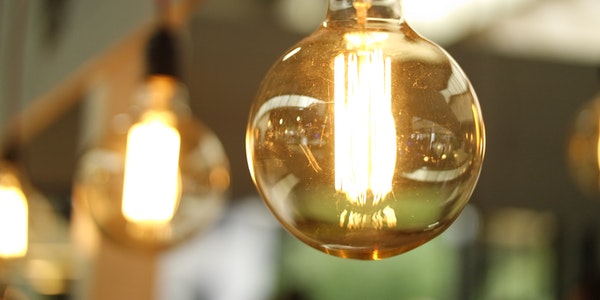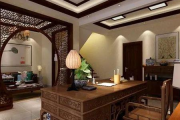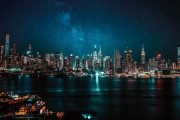What is Green Lighting?
Green lighting refers to the use of high-efficiency, long-life, safe and stable performance lighting electrical products (light sources, electrical accessories for lights, lamps, wiring equipment, and dimming and light control devices) to improve people’s work through scientific lighting design , Learning and living conditions and quality, so as to create an efficient, comfortable, safe, economical and beneficial environment and fully reflect the lighting of modern civilization.
The starting point of green lighting is to save energy and protect the environment. The purpose of implementing green lighting is to develop and promote high-efficiency lighting equipment, save lighting power, and establish a high-quality, efficient, economic, comfortable, safe, and beneficial environment.
Green lighting not only requires energy conservation, but also achieves energy conservation while meeting the requirements for lighting quality and visual environmental conditions. Therefore, it is not only necessary to reduce the lighting standards to achieve the above objectives, but to improve the energy-saving capabilities of the entire lighting system. Standards and lighting quality are achieved through fewer lamps and lower power consumption.
According to the specific analysis of the application of floodlight lighting, based on the concept and requirements of green lighting, this article gives the selection of light source and device materials in the optical design of floodlight lighting and the light distribution design requirements of the luminaire: first choose short arc, high light Traditional light sources with high color rendering and high lumen maintenance rate and emerging high-efficiency LED lighting sources.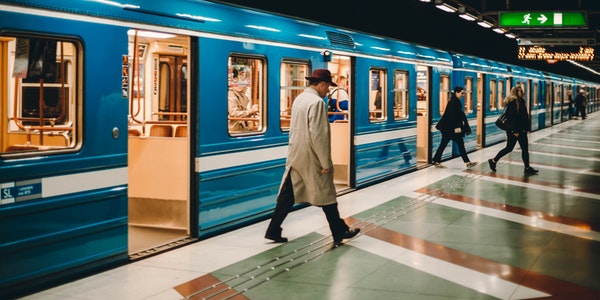
Secondly, the modular design is adopted to design the omni-directional combination of reflectors, hoods and refractive lenses with different reflection functions to control the projection direction and beam shape of the light, reduce the overflow of the lamps and the stray light of the sky formed by the polarized light energy and artificial lighting, and improve the projection Visual comfort of light lighting, control light pollution.
In addition, it can also improve the optical performance of the reflective material and lens material of the projection lighting lamp, increase the light output rate of the lamp, save energy and reduce the lighting cost.
Relevant requirements for architectural lighting
Flood lighting is lighting for scenes or objects. Usually achieved by floodlights and projector lights, the purpose is to greatly increase its illuminance relative to the surrounding environment.
Project-light lighting lamps generally include “directional lamps”, “adjustable lamps” and so on. Floodlight is a kind of luminaire that uses reflection or refraction to increase the light intensity within a limited solid angle, and can usually be directed in any direction.
The illuminance is the luminous flux density, and the illuminance reflects the amount of illumination of the illuminated object. In lighting design, the first step is to determine a design illuminance value, and then calculate the power and quantity of lamps based on this value.
The illuminance standard is formulated by each country in accordance with its own economic conditions, power supply capacity and sanitation standards. Different use places have different standard values. Lower than the standard value cannot meet the needs of the place, and higher than the standard value will cause a waste of electric energy.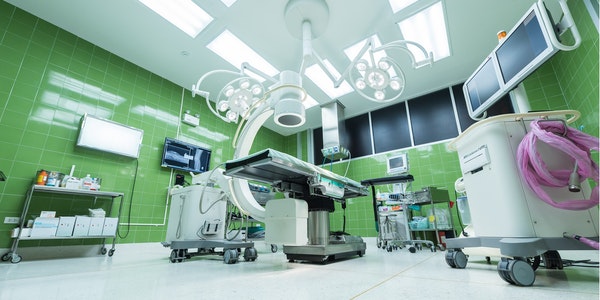
According to the standards of the International Commission on Illumination (CIE), for the walls of medium-colored facing materials with a reflectance of 30% to 40% on the building facade, such as medium-colored stone, cement or light-colored marble walls. The required average illuminance is 40 lx under dark background, 60 lx under general background brightness (8 cd/m2), and 120 lx under bright background. If the cleanliness of the wall is relatively clean, the correction factor Z=2, the required illuminance of the building wall is 80 lx, 120 lx and 240 lx respectively.
Table 1 CIE on the surface decorated with the medium decorating materials for the average illumination requirements:
|
Surface material |
Correction factor |
|||||||
|
Environmental brightness |
Type of Light Source |
Surface condition |
||||||
|
Gloomy |
Medium |
Bright |
Metal Halide |
LED |
Clean |
Dirty |
Very dirty |
|
|
Light stone |
40 |
60 |
120 |
1 |
1 |
2 |
5 |
10 |
| White marble aluminum (surface baking paint gloss) |
200 |
300 |
600 |
1.2 |
0.9 |
1.5 |
2 |
2.5 |
Through the investigation of the night scene lighting conditions of the building facades in some representative cities in the world, it is found that the night scene is getting brighter and the light pollution caused by the lighting is particularly prominent. The average illuminance of night lighting on some building facades exceeds 500 lx. Building facade lighting consumes as much as 25 W/m2, and it also produces light pollution and light interference.
The survey results of the night scene lighting on the facades of 121 buildings in New York and Paris show that the wall reflectance of these buildings is basically between 30% and 40%, and the cleanliness of the walls is relatively clean. The environment of the building is also brighter.
In contrast to the CIE standard, the average illuminance of the night scene lighting of the investigated building facade should be equal to or lower than 240 lx, but in fact 37% of the buildings exceed the CIE standard. In addition, in the lighting design, improper implementation of light distribution and lighting schemes will also cause a large amount of overflow light.
According to survey statistics, the spilled light of the building facade projection lighting accounts for about 1/3 of the total light energy of the lighting. The sum of the spilled light of the global building facade lighting is a very impressive figure. Not only is energy wasted, but it also causes light pollution.
In the case of large-scale construction of night scene lighting in the world, through scientific design of lighting lamps and lighting schemes, strict implementation of international lighting standards, and strengthening of lighting facility management, the dual requirements of building night scenes and saving energy can be achieved.
Optical design of lamps and lanterns based on the concept of green lighting
The energy saving of the lighting system is mainly carried out from two aspects: one is to develop and promote the application of high-efficiency and high-quality lighting lamps. The second is to provide reasonable lighting control systems and engineering applications. The research on high-efficiency lighting fixtures mainly starts from the design of the optical system of the lamp, reasonably selects the light source of the lamp, scientifically designs the shape of the optical system of the lamp, and uses reasonable reflective materials and refracting materials.
The choice of light source
The luminous efficiency of the electric light source is different due to the light-emitting principle, manufacturing process and material. The light efficiency of the metal halide lamp is close to 80 lm/W, and it is the main light source for large-scale projection lighting, road lighting and tall factory lighting. The high-pressure sodium lighting effect has reached 100 lm/W, and it is mostly used for road lighting and flood lighting. The working luminous efficiency of the LED light source is close to 200 lm/W, and the color rendering index ranges from 70 to 95. The color temperature ranges from 2200 K to 7000 K, mainly used for indoor lighting, outdoor functional lighting, and landscape lighting. It is a typical green energy-saving light source and has become the main light source for outdoor scenes and landscape lighting.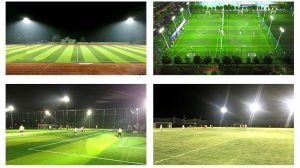
In addition, when choosing a light source, we must also pay attention to the energy efficiency of the electrical system of the lamp. How to reduce the power consumption of the ballast and improve the energy efficiency of the LED drive system in the gas discharge light source is also of concern. Such as the development and utilization of energy-saving inductive ballasts, electronic ballasts, and LED drive systems, reducing the power consumption of electrical systems is equivalent to increasing luminous efficiency.
In actual project-light lighting applications, the one-sided pursuit of high color rendering and high color temperature will cause a huge waste of energy and run counter to the goal of green lighting and energy saving.
In the projection lighting of some stadiums, high-power metal halide lamps or LED light sources of 1000 W to 2000 W are generally used. The efficiency of lamps and the application of appropriate types of products in the project are particularly important for achieving energy saving.
Metal halide light sources commonly used in sports lighting are usually divided into 65 (or 80) and 90 according to the color rendering index. According to the corresponding color temperature, it is divided into 3700 K (or 4 000 K) and 5600 K. The latter is usually used in international color TV broadcasts, Olympic Games, World Cup matches and high-definition TV broadcasts. The former is used in daily training, competitions, and color TV broadcasts.
In different regions of the world, such as North America and Europe, the standards implemented are also quite different. The current sports lighting standards have different requirements for this. The luminous flux of light source with different color rendering index and color temperature is obviously different. Taking a 1000 W metal halide light source as an example, the light output of a metal halide light source with a color rendering index of 65 is 110 000 lm, while the light output of a metal halide light source with a color rendering index of 90 is only 90 000 lm. The luminous flux of the former is about 20% higher than that of the latter, which means that under the same illumination level and illumination uniformity requirements, the latter can save energy by about 20%.
For LED light sources, the color rendering index ranges from 70 to 95. For high-power single-crystal LED light sources, the luminous efficiency of the CRI 70 of the same specification is about 230 lm/W, while the LED luminous efficiency of the CRI 90 is only 160 lm/W. The former can save energy by about 40%. Therefore, choosing the appropriate color temperature and color rendering index of the light source according to the requirements of the lighting scene is also very helpful for lighting energy saving.
(To Be Continued)

